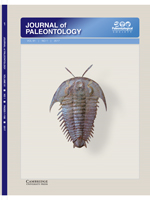New samples of fusulinids collected in the Tengchong Block, western Yunnan, China, are systematically studied and presented here. The fusulinid fauna from the Xishancun section in the Shanmutang area is dominated by Chusenella and Nankinella, whereas that from the Shuangheyan area is composed mainly of Chusenella and Schwagerina. Both faunas are dated as Roadian—Capitanian (middle Permian). These new findings are integrated with fusulinid taxa reported earlier from the block to demonstrate the taxonomic features and paleogeographic significance of Permian fusulinids. The low generic diversity through early and middle Permian and the paucity of middle Permian neoschwagerinids and verbeekinids in the block confirm its Gondwana-affinity attributes. Moreover, the Permian fusulinids of the Tengchong Block are depauperate; i.e., consisting of a limited number of species with abundant individuals. This particular feature commonly suggests an inhospitable environment, and carbonates of varied facies containing these faunas in the Tengchong Block suggest a facies-independent factor as the reason, most likely the relatively low temperature of seawater.
How to translate text using browser tools
1 January 2017
Depauperate fusulinid faunas of the Tengchong Block in western Yunnan, China, and their paleogeographic and paleoenvironmental indications
Yukun Shi,
Hao Huang,
Xiaochi Jin
ACCESS THE FULL ARTICLE

Journal of Paleontology
Vol. 91 • No. 1
January 2017
Vol. 91 • No. 1
January 2017




